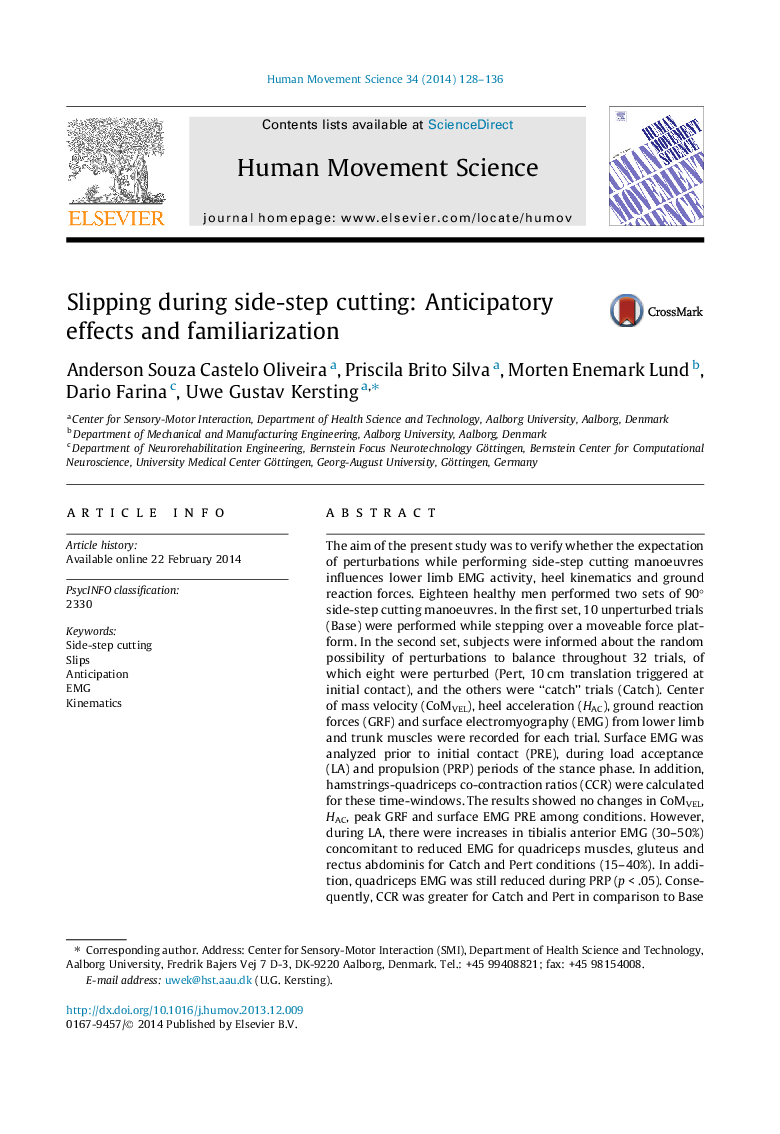| Article ID | Journal | Published Year | Pages | File Type |
|---|---|---|---|---|
| 928416 | Human Movement Science | 2014 | 9 Pages |
•Anticipatory effects of perturbations to motor control were investigated.•Awareness of perturbation to balance while cutting does not alter performance.•Modulation of muscle activity is phase-dependent during side-step cutting.•Increased co-contraction ratio is an attempt to improve knee stability.•Anticipatory strategies to assure safety also exist in sports gestures.
The aim of the present study was to verify whether the expectation of perturbations while performing side-step cutting manoeuvres influences lower limb EMG activity, heel kinematics and ground reaction forces. Eighteen healthy men performed two sets of 90° side-step cutting manoeuvres. In the first set, 10 unperturbed trials (Base) were performed while stepping over a moveable force platform. In the second set, subjects were informed about the random possibility of perturbations to balance throughout 32 trials, of which eight were perturbed (Pert, 10 cm translation triggered at initial contact), and the others were “catch” trials (Catch). Center of mass velocity (CoMVEL), heel acceleration (HAC), ground reaction forces (GRF) and surface electromyography (EMG) from lower limb and trunk muscles were recorded for each trial. Surface EMG was analyzed prior to initial contact (PRE), during load acceptance (LA) and propulsion (PRP) periods of the stance phase. In addition, hamstrings-quadriceps co-contraction ratios (CCR) were calculated for these time-windows. The results showed no changes in CoMVEL, HAC, peak GRF and surface EMG PRE among conditions. However, during LA, there were increases in tibialis anterior EMG (30–50%) concomitant to reduced EMG for quadriceps muscles, gluteus and rectus abdominis for Catch and Pert conditions (15–40%). In addition, quadriceps EMG was still reduced during PRP (p < .05). Consequently, CCR was greater for Catch and Pert in comparison to Base (p < .05). These results suggest that there is modulation of muscle activity towards anticipating potential instability in the lower limb joints and assure safety to complete the task.
